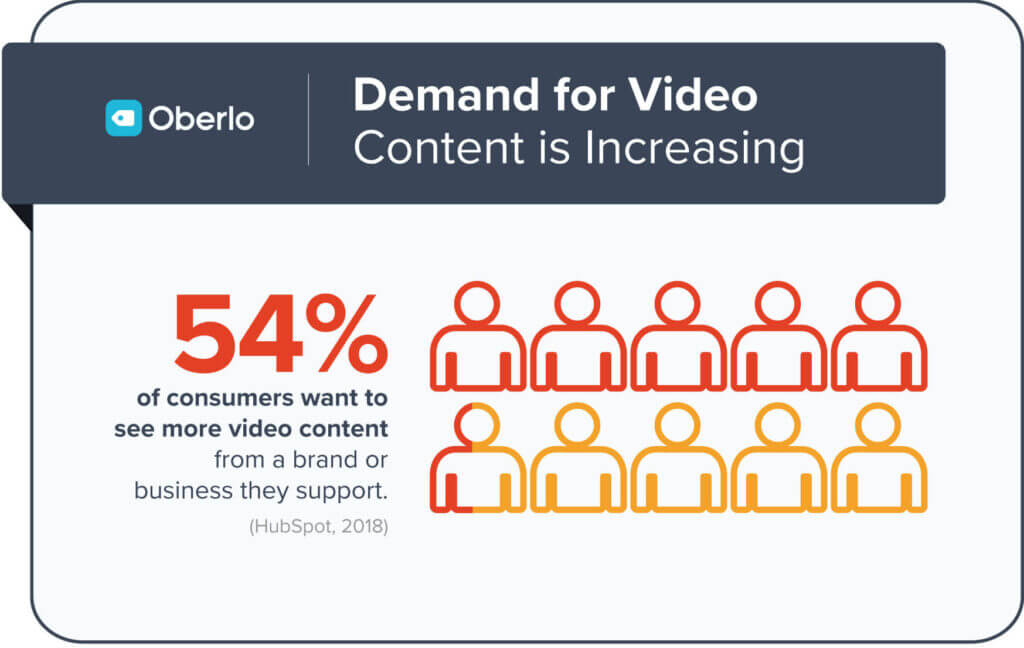It’s not a new development that a functional, engaging website is crucial for any business. However, it’s especially important for B2B companies. According to the market research firm, Forrester, 68% of B2B customers prefer to research independently online. 60% do not want to rely on a sales representative as a primary source of information. You can put your all into a sales pitch, with all of the stats to back it up. But if you have a hard-to-navigate, subpar site, your potential client might determine that “it’s just not a good time.” Or they’ll “keep you posted.” So if you haven’t taken your B2B website strategy seriously yet, make that your New Year’s resolution.
The internet goes through a lot of changes very quickly. So it’s essential to keep your website up-to-date. If you have the means to do so, it’s advisable to do a significant strategic website strategy refresh every couple of years. This will ensure the site is in sync with your company objectives.
Kickstart your new website strategy
Don’t know where to start? Here are some pointers:
- Rework your keyword strategy: You might feel like your web traffic has been lagging. Maybe you just haven’t put a lot of thought into your keyword strategy since you launched your website. Take this opportunity to read up on new SEO guidelines and determine how you can improve your site ranking game.
- Refresh your CTAs: You know CTAs are a significant aspect of your website — you have them on every page! However, the CTAs you’ve used for the last few years are likely looking a little tired. If you don’t have the time or resources for a full revamp, just design some new buttons. This is especially important if you have new offerings.
- Update your images: If it’s been a while since you updated your website’s banners or graphics, give them a double-take. Make sure they’re still speaking to your brand. If they were trendy when you started using them a few years ago, they could look a little outdated now.
- Check your navigation: When you work with a website day in and day out, its navigation becomes second nature to you. It might not be that easy for someone less familiar to get from point A to point B, though. Ask someone who doesn’t spend a lot of time on your website to click around a bit and report back. What can you do to make it as easy as possible for potential customers to get around?
- Click on the links: There are a lot of reasons that a link might break, so you want to make sure all of the links on your website are active. Make sure your internal links haven’t been broken through code changes or previous website updates.
Do a website audit
UX guidance firm, the Nielsen Norman Group, found that the average visitor only reads about a quarter of the content on any given page. And that was in 2008. I think we all can agree that our attention spans have dwindled in the past decade.
So your writing has to be sharp. Or your videos have to be engaging. Whatever type of content you house on your website needs to be interesting enough to keep people on your page when a human’s attention span is working against them.
You might think you need to cram as much as you can onto your website to ensure people get all of the information they need. However, it’s been proven that a complicated site with too much to read hinders people’s user experience. Design experts at Speckyboy suggest also steering clear of autoplay visuals and improperly placed popup CTAs to avoid distracting your readers. While simplicity is essential, you also want to ensure you don’t consolidate information too much. Readers shouldn’t have to click to multiple pages to get the full picture.
To help with making your website engaging while also keeping the amount of content displayed down, consider using web chats to increase the user experience. MobileMonkey broke down its top tips to leveraging conversational marketing in order to ensure that your site visitors are finding exactly the information they’re searching for, along with you capturing valuable lead data.

Do you need a rebrand?
It’s a common misconception that revamping your website strategy should include a rebrand. While in some cases, it’s advisable (you’ll be making over the rest of the site, why not?) that certainly isn’t always true.
Really think about why you feel you need a rebrand. And if you have the budget for one. It’s more than just your logo and colors! Changing all of that up on your website will also require changing all of your physical brandings. From your building’s signage to your business cards, it’s a big undertaking.
If you believe your whole brand needs a makeover because your website isn’t pulling in the traffic you want, remember that site views are dependent on industries. B2B sites tend to bring in less traffic than the average e-commerce site, and that’s OK. Don’t measure your goals up against another business.
Take a look at your messaging
What actually tends to be the issue when people feel like they need new branding, is messaging. Take a good look at your web content. Is it in line with what you perceive your brand to be? Someone should know your company’s story with a quick look through your website. According to Canva, your branding should tell a story, as psychologists have proven that the human brain lights up when hearing or reading a narrative. Don’t you want your reader’s minds to be active as they check out your website?
If you truly believe that your brand story is no longer relevant to what you represent as a company, then it probably is time for a rebrand. And of course, it is easiest to pull off a full rebrand when you are already freshening up your website.
Consider a launchpad site
If your website needs such a revamp that it could be easier to start from scratch, consider starting with a launchpad site. It seems incredibly daunting to revamp your entire website in a short amount of time, but you don’t have to. Having a minimal site with higher quality content can be more effective than a website that’s more fleshed-out, with less emphasis on the content itself.
A launchpad site is a “minimally viable product,” meaning that the only things housed on it at the time of launch are what’s absolutely essential. A traditional website tends to take months to finish and costs more money than a launchpad site. And you don’t even know if the changes are effective until it’s finished and launched.

HubSpot has a useful video that’ll help you sort through features and identify the core things you should include in your launchpad site.
The ultimate benefit of using a launchpad site over doing a complete overhaul is that you have the opportunity to see what resonates with your audience early on. This way, you know what works before you invest more time and money into your new web design. Your site becomes more of a living thing that supports your marketing strategy, with the flexibility that allows you to avoid falling into that trap that causes you to build an entire website based on assumptions.
Launchpad details
A launchpad site typically consists of 30 to 50 pages. Include a homepage, an “about us” page, a service/solution page, contact information, offers, and a blog. With fewer things for your users to see, they’re likely to check out more of your site and give you a chance to hone in on what people are looking at. Your content should reign supreme, and you should focus your web design around it, not the other way around.
Using a launchpad site is an iterative process, with far lower stakes than launching a full website all at once. With a launchpad site, going live isn’t the end, it’s just the beginning!
Building your site
Just a few years ago, the average person would balk at the idea of building their own website. Between the visuals on the front end and the coding on the back end, it seemed so intimidating. However, even though websites certainly look better these days, they’re less technical. With platforms like Divi, Elementor, and WordPress’s Visual Composer, sites are easier to manage.
Keeping the security of your website in mind is imperative, especially if people are making purchases. WordPress is one of the world’s largest content management system. It’s currently powering 34% of the internet! But, some people worry about its security. Be sure to enable two-factor authentication and use strong passwords and reputable plug-ins. Just like you do with everything else on the internet!
If you’re more comfortable with leaving web design to the professionals, be sure you don’t blow your budget on it. Try to allot 25% of your budget to website development. Then leave 75% to everything else, like the web host that’ll fuel your website’s performance and the content that you’ll be showcasing.
Upcoming trends
We’re already predicting what’ll be trending in 2020! With content marketing continuing to chug along, bending, and weaving through industry trends, it’s no surprise that there’s a continuing emphasis on high-quality content. The internet is a vast, black hole, and only the most influential content rises to the surface. Don’t skimp on your content marketing efforts, from case studies to blogs, and especially video.

Image: Oberlo
Speaking of video: As you can probably guess, it’s slotted to continue being one of the most substantial assets on your website. If you haven’t embraced video yet, try starting with a testimonial video. A testimonial of a third party, like a happy customer, beats out some of that noise and distrust that many consumers have lurking in the back of their minds.
Back in the earlier days of digital marketing, your brand was supposed to take a backseat. With the rise of social media and a desire for transparency, putting some more focus on your brand itself is becoming increasingly popular. Let your potential customers see who you are and what your brand stands for through your advertising and web content.
When working on your new website strategy, remember that it’s a marathon, not a sprint. What might have at first seemed like many small tasks can add up and take more time and energy than anticipated – but everything worth it does!




